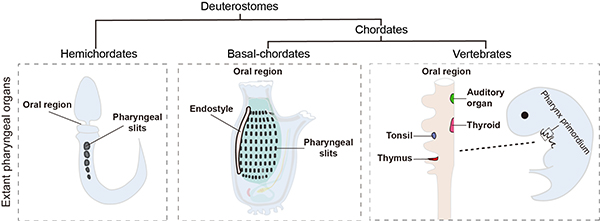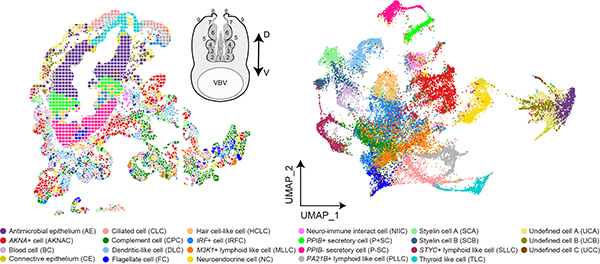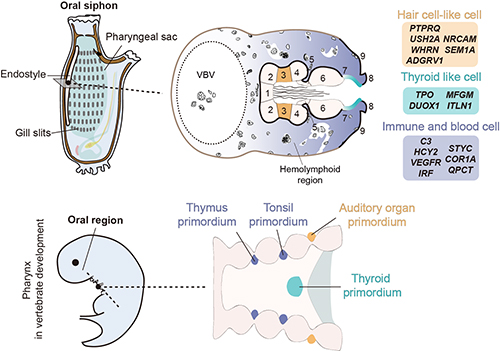On 29 March, the team led by Prof. Dong Bo from the Fang Zongxi Center for Marine Evo-Devo of OUC published an article titled “Spatially-resolved single-cell atlas of ascidian endostyle provides insight into the origin of vertebrate pharyngeal organs” in Science Advances, in collaboration with Dr. Fan Guangyi’s team from Qingdao Key Laboratory of Marine Genomics, BGI Research. Taking urochordates ascidian endostyle as the research subject, this study constructs the first high-quality spatially-resolved single-cell atlas of marine organisms in the world by using the Stereo-seq technology developed by BGI Research. It made comprehensive cross-species comparison of gene expression levels and analyzed in detail the cellular components of endostyle by combining the morphology and gene expression characteristics. A haemolymph-like cell taxon was identified for the first time in endostyle. Meanwhile, a hair cell-like taxon located in the dense tissue region of endostyle was identified, which has a high similarity in expression characteristics with the hair cells of vertebrate inner ear; and the coexistent features of thyroid-like cells with different maturation status of endostyle were revealed. The research outcomes provide insight into the potential evolution of vertebrate pharyngeal organs.
This research is the first to apply the Stereo-seq and single-cell RNA sequencing in evolutionary developmental biology of marine animals, and to identify the cellular components of the evolutionarily unique pharyngeal organ in a high-throughput way. The results provide methodological references for further understanding the pharyngeal organ’s composition, which is an evolutionarily important and unique group of marine organisms. It provides high-quality data and novel insights into the origin of the pharyngeal organs.


